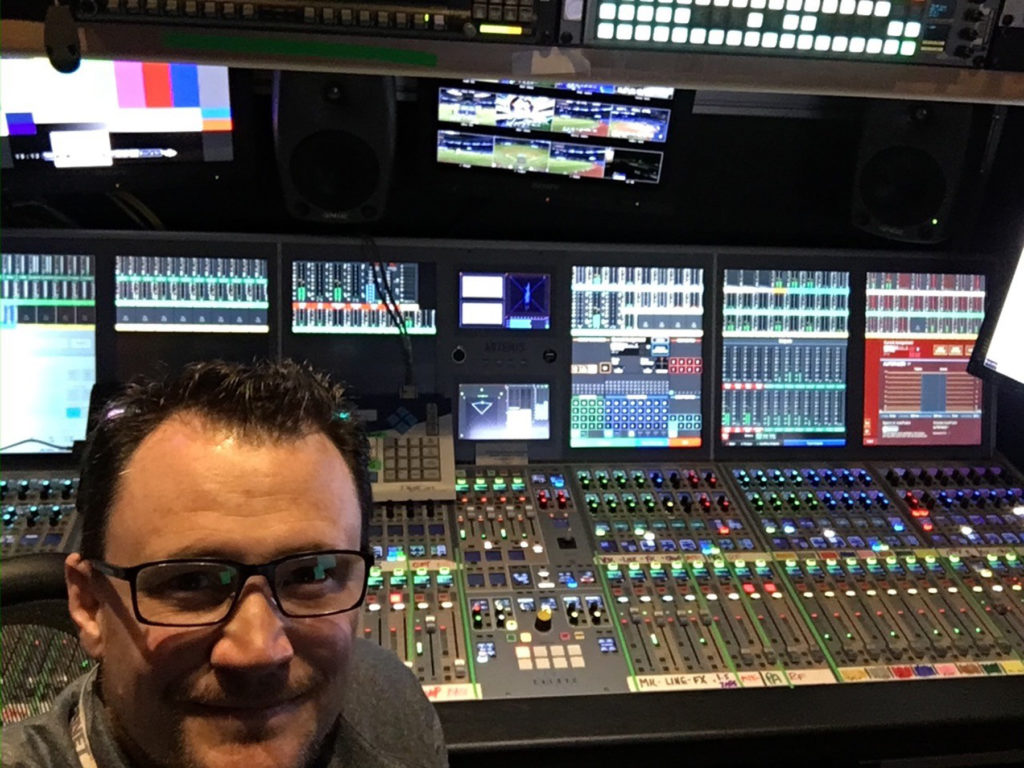TORONTO — For the past two decades, freelance A1 Mixer Andrew Stoakley has worked on many of the major sports and entertainment shows produced in Canada. With assignments ranging from MLB baseball to NHL hockey and curling (among others), Stoakley has come to rely on the flexibility and features of Calrec consoles to capture the various dynamics of each sport.

“Sporting events have highs and lows that change by the second and, as a mixer, you need to be flexible,” says Stoakley. “The user interface and software of Calrec consoles allow me to do my job to the best of my abilities. Whether working on the Artemis, Apollo or the original Alpha, which I still love, Calrec’s consoles give me instant access to basically all our monitoring. With Calrec, I’m not searching through menus – all the auxes, direct outs, multi-tracks, EQs and dynamics are right there.”
For Stoakley, this flexibility translates across the board – regardless of which sport he’s mixing. “With curling, there are 28 player RF microphones and another 20 effects mics buried in the sheets of ice,” he continues. “So, that’s 48 faders that I need to access, on top of the 14 talent mics, six camera mics and four stereo crowd mics that I use. If I have to go looking for mics on the console, I’ll miss the opportunity to get that moment on-air. The new software on the Apollo goes way above and beyond, but it doesn’t matter which Calrec console I’m using – when I sit down to an Artemis, Apollo or Alpha, I feel very comfortable.”
As a freelancer for Dome Productions, one of Stoakley’s main roles is mixing Toronto Blue Jays’ baseball games and NHL hockey games. “Although you want to capture the announcer’s commentary regardless of the application, mixing has specific requirements that are unique to each sport,” he says. “Viewers tune in to hear announcers discuss the sport, so I need to ensure they are clear and present in the mix. That’s why I like baseball – there is so much dynamic range, and I love that. I want to hear the quiet, it makes for a much more interesting mix. In contrast, hockey is aggressive, so I try to capture every skate blade or puck shot. Regardless of the sport, Calrec consoles always help me mix a better broadcast.”
Another reason Stoakley chooses Calrec consoles for his sports mixing is the design of the console itself. “The ergonomics of the console are really well laid out,” he adds. “With Calrec, I can manipulate six faders with one hand as opposed to three with a competitor’s console; that’s a massive difference. I don’t end up having hand fatigue when I’m mixing nine to 10 straight hours of curling. As I like to say in sports, the first pitch doesn’t wait for us. We’ve got only ‘X’ amount of time to get the show up and running and make sure everybody is happy before that first pitch happens. If something goes wrong and you have to scramble for answers, it can get really stressful very quickly, and the Calrec consoles do everything possible to alleviate that stress.”
In addition to the great sound and interface of the Calrec consoles, Stoakley also finds the company’s customer service to be top-notch. “The Calrec support team is really awesome,” he says. “If we ever have any questions, they are always available.”
